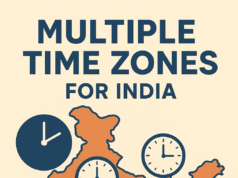In his commentary on the work of famous British novelist Charles Dickens, George Orwell remarked, “All art is propaganda, on the other hand, not all propaganda is art”. The larger point he sought to convey was that every creator is driven by a set of beliefs and values which becomes embedded in their work. There is however an exception to this norm: when a message is propagated about the actions of the state. Though crafted by individuals, such messages remain no longer the expression of personal beliefs alone.
To start off, it is helpful to distinguish propaganda from other forms of persuasion like advertisements. Propaganda is purposefully biased or false. Once produced, it is ripe to promote a political cause. The spread of propaganda is bad for those on the receiving end, as the propagandist’s message limits the receiver’s ability to make informed judgements. Advertisements also use persuasive techniques, but they do not restrict people’s ability to make informed judgements, even if their intent comes from commercial incentives of profit. Instead they make consumers aware of available options and thereby enhance their capacity to choose. This distinction should sharpen our concern about the reach and prevalence of propaganda in society.
This is an important distinction made by economists Christopher Coyne and Abigail Hall in their book: Manufacturing Militarism. They also argue that the state possesses strong incentives to deploy propaganda as a means to achieve a specific end. Political legitimacy is that end, and movies become the means. The Indian case reflects this dynamic too.
Established literature from Public Choice theory makes a strong case that the primary motivation of politicians is to get re-elected. To be re-elected, support from interest groups plays an indispensable role in shaping electoral strategies. Propaganda can help to frame the demands of narrow interest groups as legitimate and to make them politically feasible, even if these policies impose large costs on citizens overall.
Propaganda’s messaging can be of four types. The first looks to appeal to an authority. The second looks to appeal to patriotism that demands vigorous support of state action. The third, and a dangerous one, is an appeal to see events from an “us vs them” perspective, so that there are in-groups who are allies, and out-groups who are enemies. The fourth, is more sophisticated. It embeds slogans and imagery that is emotional with a high recall value. Many of these elements can be seen in Indian movies.
The movie Uri (2019), for example, banked on an appeal to military heroism. In its opening minutes the call out for “based on facts” and the larger-than-life portrayal of the Indian government lend appeal to authority. This messaging got another shot in the arm on authority when the Prime Minister praised the film himself. The “us vs them” narrative is also at play, where the terrorists and well trained soldiers are always in sharp contrasts, with no shared commonalities. Memorable slogans with high recall value are peppered across the movie such as, “Yeh naya Hindustan hai, yeh ghar mein ghusega bhi, aur marega bhi!” (This is a new Hindustan, it will enter your house too, and beat you up too). This phrase became popular reflecting the government’s aggressive stance on national security, making it much easier to gain legitimacy for similar strikes in the future.
Another example is from the movie Tejas (2023). It was screened at the Lok Bhawan after the state cabinet meeting. An important narrative of the movie focuses on Tejas, the combat aircraft, designed and manufactured indigenously in India. The movie’s jingoism is apparent when it is contrasted with actual hurdles faced in the production and delays in the production of the aircraft. The aircraft carries several issues on delays in delivery, its maintainability and a prolonged development time taken of up to 40 years in the making. The reality is one of bureaucratic red-tape. None of this was featured in the movie. The pro-Tejas narrative is harmful when objectivity is lost and the dominant messaging amplifies the aircraft’s reliability and performance. What’s worse is that plot lines contained the sensitive matter of Ram Mandir, ahead of the General elections of 2024.
Governments also have an active incentive to expedite and promote such movies, through tools like tax breaks. Operating in a high-risk industry compels movie production houses to take that as a signal to alter their productions and script narratives.
This trend however is not new. This has persisted since the formation of the Indian state. Haqeeqat (1964) and Upkar (1967) are two such movies that rank high in the list of propaganda movies. Haqeeqat as a war-time movie was meant to soothe the losses of the 1962 Sino-India war, and the Upkar contained a direct reflection on then Prime Minister’s slogan “Jai Jawan, Jai Kisan.”
India’s long history of such films illustrates how propaganda serves as a low-cost, high-yield tool for politicians to secure legitimacy. Its downsides are that it imposes costs onto an uninformed electorate. Propaganda in cinema is a calculated political instrument that can bypass democratic accountability.
Post Disclaimer
The opinions expressed in this essay are those of the authors. They do not purport to reflect the opinions or views of CCS.





